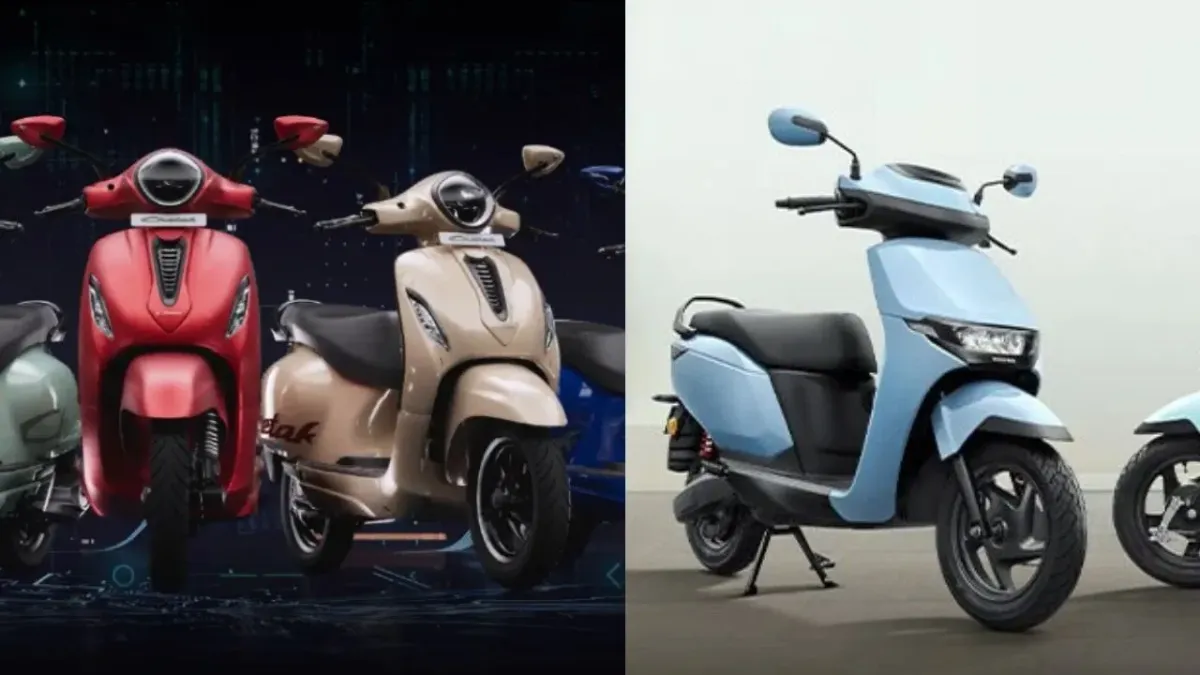Bajaj Chetak vs Honda Activa E: The electric two-wheeler segment in India is evolving rapidly, and two major players—Bajaj and Honda—are competing head-to-head with their latest electric scooters. Bajaj has refreshed its iconic Chetak, while Honda has introduced the electric version of its best-selling Activa. If you’re planning to buy an EV scooter soon, this comparison will help you decide which one suits your needs better—Bajaj Chetak or Honda Activa E.
Price Comparison: Chetak Is More Budget-Friendly
When it comes to affordability, the Bajaj Chetak clearly takes the lead. It is priced at ₹99,900 (ex-showroom), making it one of the most competitively priced electric scooters in its segment. On the other hand, the Honda Activa E comes at ₹1,17,000, which is ₹17,000 more than the Chetak.
Chetak is available in three color options and four different variants. In contrast, Activa E offers five colors but only two variants. If you’re price-conscious, the Bajaj Chetak delivers better value for money.
Battery and Range: Chetak Offers a Longer Ride
Both scooters are equipped with a 3 kWh lithium-ion battery, but there’s a significant difference in performance. Bajaj Chetak features a fixed battery pack that provides a claimed range of 127 km on a full charge. Honda Activa E, despite having the same battery capacity (divided into two portable units), offers a range of only 102 km.
In terms of protection, the Chetak’s battery carries an IP67 rating, whereas the Activa E has an IP65 rating, making Chetak more resistant to water and dust. The Chetak also supports faster home charging with a 750W portable charger, achieving 0–80% charge in approximately 3.5 hours. Honda hasn’t disclosed the charging time or charger specs yet.
Performance and Speed: Activa EV Packs More Power
For those prioritizing performance, Honda Activa EV stands out. It is powered by a 6 kW electric motor, enabling it to reach a top speed of 80 kmph. In comparison, the Bajaj Chetak has a 3.1 kW BLDC motor and tops out at 62 kmph.
In terms of acceleration, the Activa EV can go from 0 to 40 kmph in just 3 seconds, offering a sportier ride feel. Bajaj hasn’t specified acceleration figures, which indicates that the Activa might have the edge in this department.
Riding Modes and Transmission
Both scooters use automatic transmission, ensuring a hassle-free riding experience. However, the Activa EV offers three riding modes: Eco, Normal, and Sport. The Chetak is limited to just Eco mode, which may be less flexible for varying road conditions or rider preferences.
Features and Safety: Chetak Provides More Practicality
In terms of everyday usability and safety, Bajaj Chetak scores better. It includes advanced features such as hill assist, reverse mode, parking assist, and an anti-theft system. Meanwhile, the Activa EV only provides reverse mode and misses out on other supportive features.
While both scooters offer basic functionalities like electric start and start/stop buttons, neither of them comes with a USB charging port or cruise control.
Charging Convenience
The Chetak’s 750W portable charger allows for convenient home charging. Its fixed battery design might suit users who don’t want to deal with removing batteries. In contrast, Activa E uses two portable batteries, which could be practical for those without easy access to charging outlets, though details on charging output remain undisclosed.
Final Verdict: Which One Should You Choose?
If you’re looking for an affordable, efficient, and reliable electric scooter, the Bajaj Chetak is an excellent option. It offers better range, a competitive price, and more useful features for daily commuting.
However, if performance, top speed, and acceleration matter more to you—and you’re willing to spend a bit extra—the Honda Activa EV might be the better fit. It delivers stronger power output and multiple riding modes that enhance the overall riding experience.
In the end, your choice will depend on whether you value cost-efficiency and range or power and speed more.
Read more-






